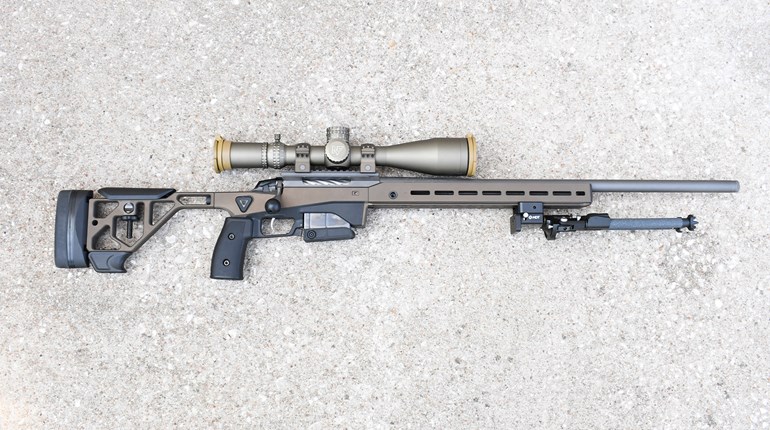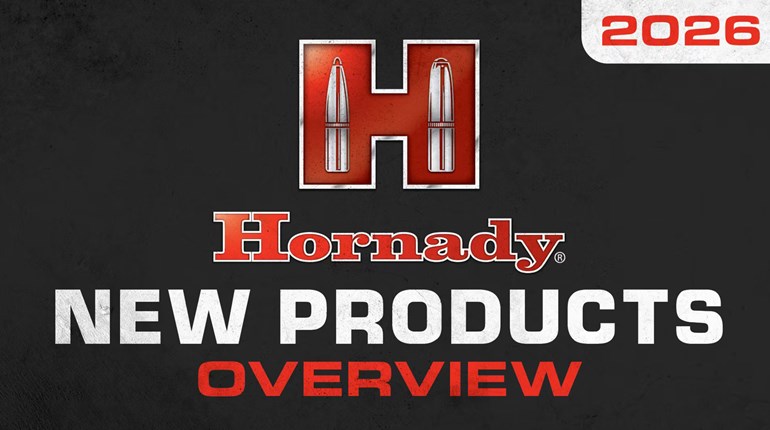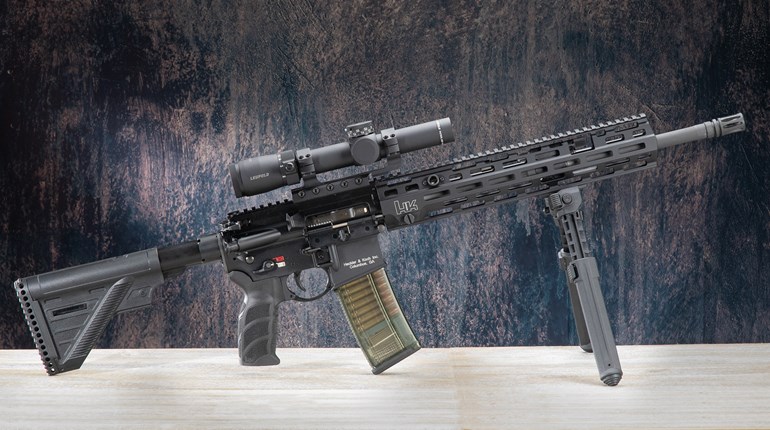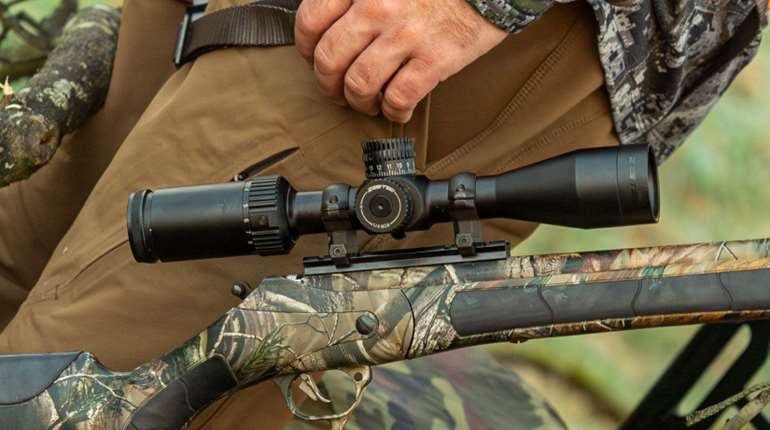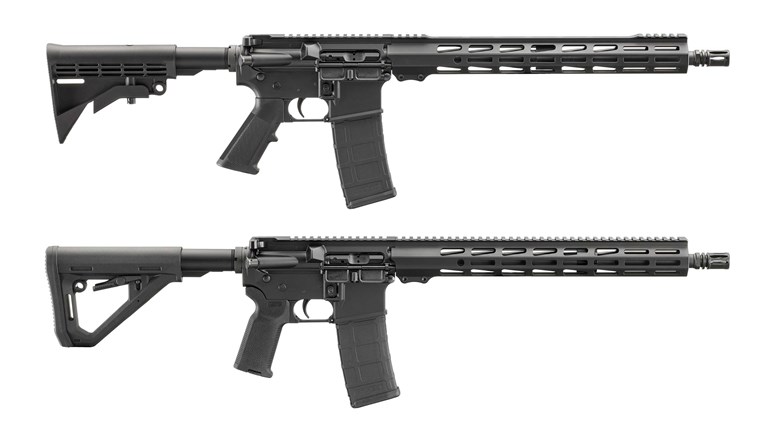
When it comes to accurate ammunition, the key is consistency. For this reason, long-range precision shooters turn to handloading, as it offers absolute quality control. Handloaders will trim and weigh brass to ensure each case is identical before weighing out a precise powder charge that is within one-tenth of a grain of the last before seating a specialized projectile to a specific depth that works perfectly in their gun and their gun only. While all of this work seems tedious, the result is one-hole accuracy at 100 yards or greater.
While powders, cases and primers have had a much easier road toward consistency, the bullet itself has seen continuous improvement. When developing a bullet to be as accurate and consistent as possible, much attention is paid to the meplat or tip. Tips that are deformed act almost as a rudder and cause the bullet to wobble during flight, leading to a corkscrew-type flight path and resulting in poor accuracy. Hornady thought it solved the problem with the introduction of the A-MAX bullet some many years ago. The idea was to make the tips out of a polymer, as it is an easier material to form perfectly. Turns out they were right, just as long as the bullet didn’t experience aerodynamic heating which, in turn, melts said tip.
Moving forward, Hornady ballisticians and engineers created a new polymer that resisted this heat-related deformation and dubbed the new extremely low-drag projectiles the ELD Match and the ELD-X, with the X designating an expanding bullet. All was well in the world until five minutes of contentment passed by, and they asked “How do we make it better?”
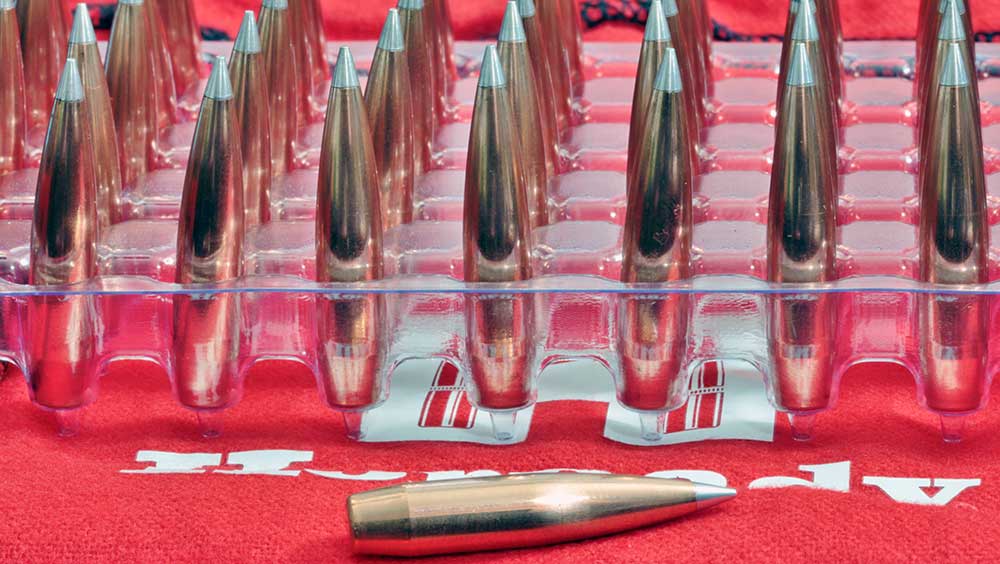
The polymer-tipped bullets certainly have been accurate in all of my testing and have produced some terrific results; however, the one complaint many precision shooters have with Hornady bullets is inconsistency. While this inconsistecy is not enough to take you outside of MOA accuracy, many long-range shooters are trying to make ammunition that is capable of half-MOA accuracy or better. After all, that half-inch of error at 100 yards is 5 inches outside of the group at 1,000 yards! In addition to consistency issues, Hornady engineers are limited to just a handful of different polymer tips for use in the development of new projectiles. With these two limitations in mind, Hornady set out to bring a new bullet to the shooting community, and at the 2019 NRA Annual Meeting & Exhibits the company launched the revolutionary new A-Tip.
The new A-Tip bullet is Hornady’s first ever mid-year launch and judging from its reception, it appears like they held out for the right product! At the Annual Meetings, I was able to nab an impromptu meeting with Marketing Communications Manager Neal Emery, where he filled me in on the new pill. Here he explained: “The A-Tip bullet is designed around a custom aluminum tip. This tip is machined independently for each caliber and weight of bullet, giving us complete control over the center of gravity. Having the ability to build a bullet with more tip material or less tip material adjusts the balance point just like a balance scale."
Neal also went on to explain that each bullet is package sequentially right off the line. The 100 that arrive at your door were all made one right after the other, reducing the inconsistencies and dimensional fluctuations that impact all machined products as tooling wears and dulls.
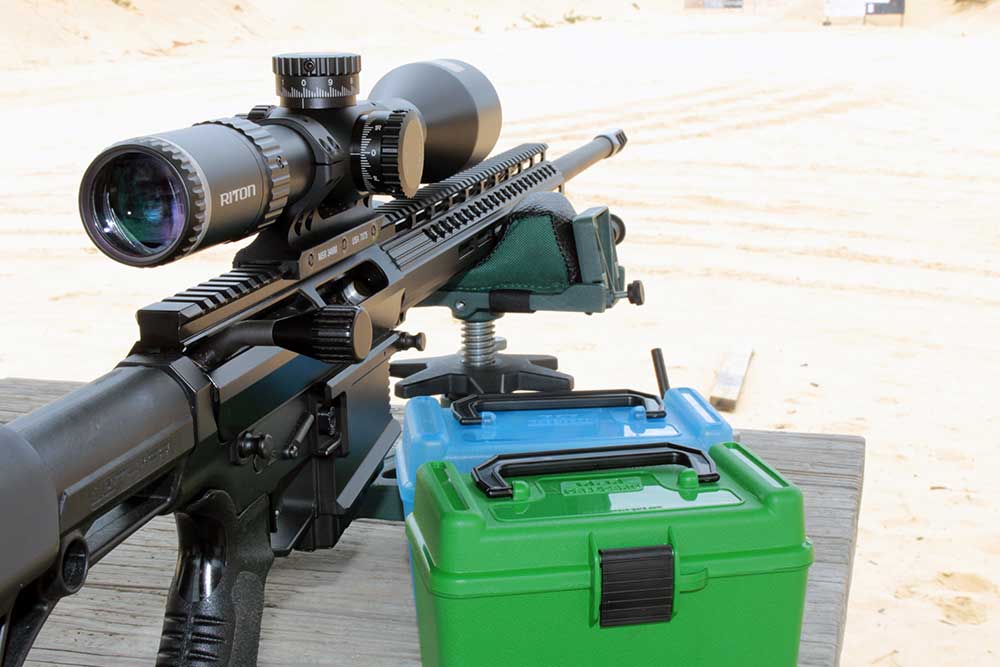
Excited about the new product, I requested a batch of the company's new 6.5 mm 135-grain projectile with the intent of conducting some load development on our Uintah Precision 6.5 Creedmoor bolt-action AR-10 build. This rig is complete with Riton’s new Mod-7 4-32X FFP optic and a TriggerTech AR Diamond trigger; in other words, we were building a round for long-range testing. On my way out of the booth, Neal also explained that, during testing, Hornady ballisticians would hit a node right around where the 143-grain ELD-X bullets find their best powder charge. With that knowledge, I gathered up some H4350, CCI BR-2 primers and a Forster bushing bump die to build some loads using the same powder charges as my current 143-grain ELD-X handload.
The Forster Bushing Bump Die is a work of art in itself, as it only slightly resizes a fired case. This allows it to keep its custom fire-formed dimensions that match the chamber perfectly. The interchangeable bushings allowed me to set neck tension to a minimum, ensuring a gentle, smooth seating and an effortless release when fired. With prepped brass at hand, I opened the package to find not only the Hornady A-Tip bullets, but also a special seating stem designed just for loading it. This seating stem supports the bullet in the proper location in order to eliminate the chance of marking them when they are being inserted into the case. After slipping them out of their carton, I noticed a cotton bag was included.
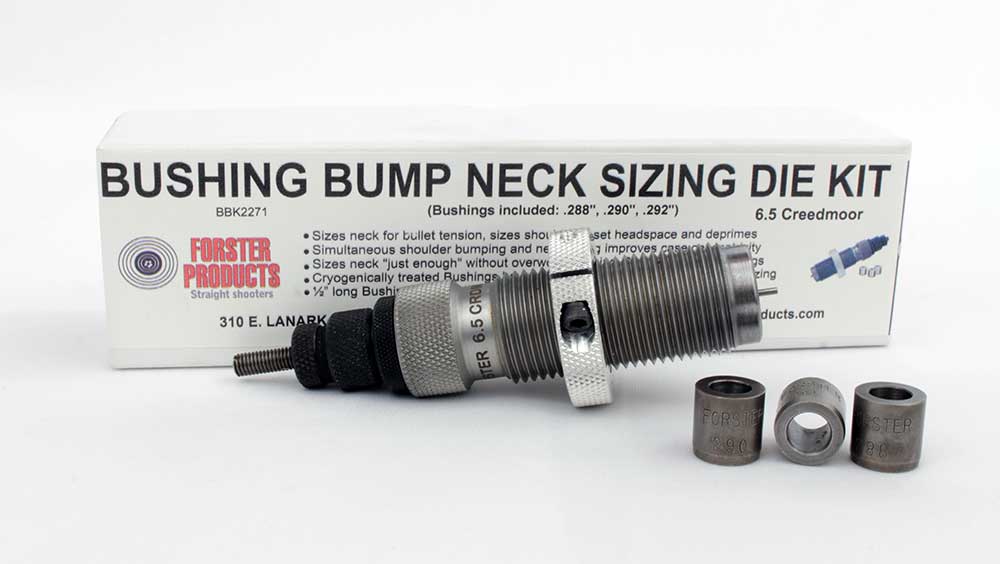
This bag is designed to hand-polish the rounds, as they do not undergo any bulk polishing in the factory. This is done to keep the small batches of just 100 together. Pulling out my calipers, I measured 20 of them and found less than one half of one thousandth variation from tip to base. If you are trying to picture that, imagine a sheet of copier paper. The thickness of that paper is five thousandths of an inch, and the bullet variance is only one-tenth the thickness of that sheet of paper. Weights of the sample were no more than one-tenth of a grain in variance either direction. Since my scale is only accurate to +/- one-tenth of a grain, it’s hard to really measure any variance at all. Specs like this are absolutely stunning. From here, all that’s left to do is shoot them.
My first range day was right here on Long Island on a calm morning with nary a breeze. As I worked through the groups, I found a node right around 41 grains of power (just like my 143-grain ELD-X load) that produced a four-shot group at 100 yards that touched. Excited, I touched the fifth shot off a little quick and put it just outside of the group. Even with a bit of shooter error, I still had sub-MOA accuracy, which is good enough to take a trip to the Mifflin County Sportsman’s Association Range. I consider this range my proving grounds for all things accurate, as not only is it one of the finest facilities in the country, but I get to share it with some of the most-talented shooters I have ever met as well.
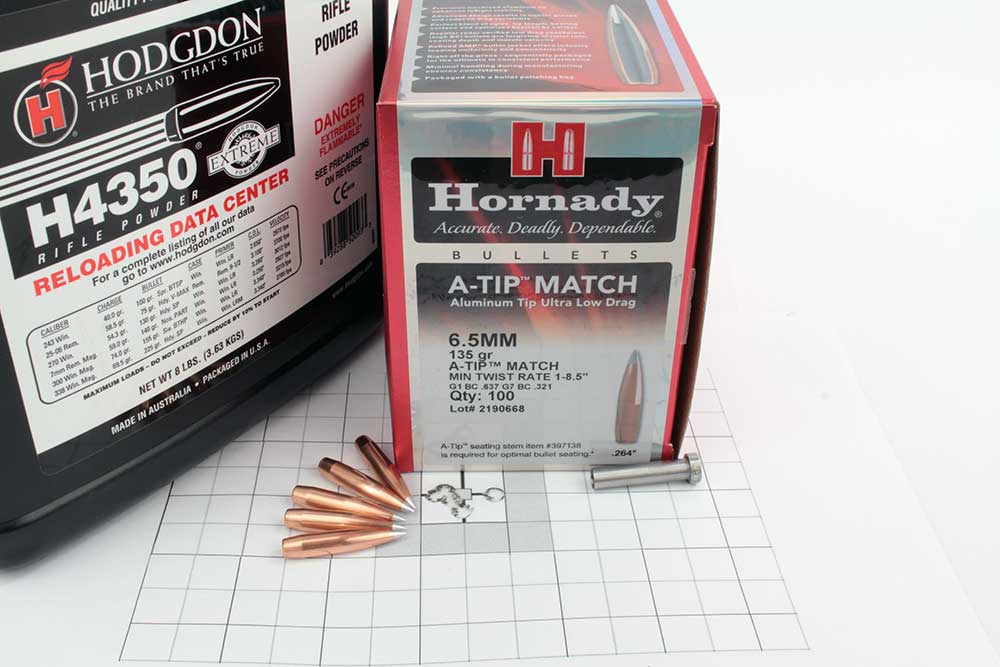
Using the new joint-project Hornady Kestrel 5700 weather meter, we were able to get precise atmospheric conditions from our exact firing point and scored a first round hit on a steel target at 500 yards. With enough ammo to finalize zero and produce six 5-shot groups, I invited five friends who compete weekly in long-range events to see who could shoot the best group with these new handloads. Together the six of us aggregated an average of 5.12 inches at 500 yards, with the best group of 4.81 inches belonging to Accuracy Solutions Consultant Charles Parente.
My experience with the Hornady A-tip bullets was extraordinarily favorable. It isn’t often that I obtain sub-MOA accuracy in my first round of load development, especially with brass that has been through minimal preparation. Coupling these projectiles with a purpose-built weather meter only increased the probability of a first-round hit. Although their cost is significantly higher, it’s important to remember that these are high-quality components, and in the long-range shooting game, accuracy is priceless.












